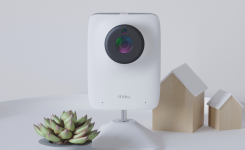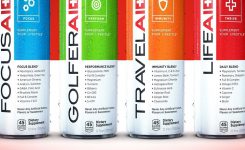Products
Acne Patches Are the Best Way to Deflate a Zit
Well, Actually is a column by Slate’s Shannon Palus. She tests health and wellness products to help readers figure out what they should try, what they should skip, and why.
A new company called ZitSticka is bringing the luxury of skin care to: the acne patch. The brand’s one and only product so far is the “Killa Kit.” The size of a large ring box, it contains supplies to help eight “up-and-coming” pimples become an “ex-zit.” It is millennial pink. The product’s Instagram inexplicably contains photos of a sun-dappled daybed and a white-tiled rain shower. At $30 per a box, or nearly $4 per a treatment, it would be easy to declare the patch just another overpriced addition to the skin care market. It is, kind of—as with so many potions, there’s at least one inexpensive and nearly identical option. But contained inside the cute box is actually some interesting technology.
Acne patches are not new. The first were little more than hydrocolloid bandages, hydrocolloid being a type of wound dressing that was introduced in the 1970s as part of “the moist wound care revolution.” As chemist and educator Michelle Wong explains on her beauty science blog Lab Muffin, hydrocolloid bandages are flexible, made from materials like cellulose and gelatin and then covered in a thin film of plastic. The flexible part sucks up fluid, in the case of a zit, deflating it. It’s essentially a way to pop the thing slowly. Hydrocolloid pimple patches (round versions of the wound bandages) have been used in Asia for over a decade. The first one, Wong estimates, was from a brand called 3M (the same parent company that makes Taylor Swift’s favorite kind of picture-hanging wall tape). You may have heard of the patches via the Korean brand Cosrx, which distributes them in a plain white-and-red envelope, all stuck to the same plastic sheet kind of like pre-cut moleskin or corn cushions.
And they sure work. In addition to glowing review after glowing review for these things, in 2006 a group of researchers in Taiwan ran a (very) small study confirming their utility. Researchers used acne patches from 3M, sold under the clinical and descriptive label “Acne Dressing” on 10 participants. They gave another 10 regular old medical tape. Everyone in the patch group reported that their acne improved at least moderately, while just a fifth of the treatment group said the same, which tracked with the researchers’ quantitative observations.
Some patches can be more sophisticated by including medication like salicylic acid with the hydrocolloid base, like Peace Out Dots and Clearasil spot patches; others just have medication on a plain plastic dot. Recently, companies like ZitSticka have begun adding spikes or “microdarts” to a hydrocolloid base. A cousin of the microneedle that can allow ingredients to penetrate deeper into your skin (when used by a pro, at least), these microdarts shuttle salicylic acid in the dot beneath the surface. As Wong points out, in a post sponsored by another company that makes microdart zit patches, a similar dissolving needle technology has been explored for vaccines and insulin delivery. (Luxury makeup brand Dr. Jart has a whole line of, essentially, spikey tape designed to banish everything from zits to under-eye circles.) According to ZitSticka, these needles are ideal for early-stage cystic acne, while more straightforward pimples and whiteheads (anything pop-able) could more likely benefit from the cheaper, plainer hydrocolloidal patches.
I ordered a pack of the ZitStickas to see if they’d work for me. They are woefully expensive for an acne patch. (These similar ones, from a brand called Rael, are almost a quarter of the price, at just over a dollar a pop.) But the ZitSticka patches specifically make the process of treating an honest-to-god pimple kind of glamorous. The ring box–like packaging looks cute enough to display on a dresser. This is not an acne patch that you’d expect to find at a drugstore: In addition to the zit stickers, it comes with tiny cleaning wipes (each individual zit gets its own cleaning wipe!). “We got you covered,” an insert white lettering reads, alongside instructions on how to use each part and a stylized illustration of the microdarts dissolving into a pimple.
I wiped the zit area (I was thrilled to have a zit!) and stuck the patch to my face. I will be honest with you—I was so excited to try these that I didn’t even check what kind of zit I was popping them onto, nor am I confident enough in my zit taxonomy to tell you exactly what it was in hindsight. The patch did not hurt in the least, but it did feel very satisfying. To my surprise, the sticker was subtle enough that I then confidently left the house. After a couple hours, it flaked off, having lost its stickiness after the darts dissolved.
What was left in its wake was still definitely a pimple, but a noticeably smaller one. If I’ve ever tried a skin care product with such immediate results, I cannot remember it. Previously, the only instant acne treatment I’d heard of that worked right away was cortisone shots, which can cost$100 a (pimple) pop, which puts the $4 price tag into a little perspective.
In the future, I’ll probably pick a cheaper microdart acne patch—these ones from Rael look extremely similar if not identical to the ZitSticka offering, and are a third of the price. Whether a microdart patch works better than a non-microdart one is hard to say—there just hasn’t been that much scientific research into the acne-patch space. Dermatologists emphasize that acne patches alone aren’t a good strategy for keeping your face clean, and they probably aren’t economical for large breakouts. But acne patches are ideal product with which to do your own experimenting with: It’s fairly easy to see if a zit has gotten smaller within a few hours of wear. It’s also a relief. Even for all ZitSticka’s cute branding, zit stickers will probably never be relaxing or fun the way, say, a face mask is. But the straightforward results take a load off, nonetheless. That’s close to magic.






